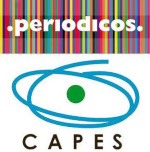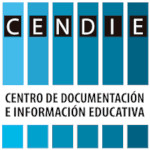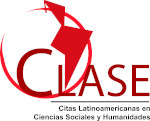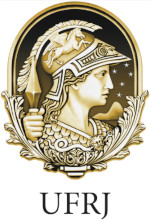Innovative practices in education enhanced by digital technologies
DOI:
https://doi.org/10.26849/bts.v45i2.771Keywords:
Innovation, Technologies, Mediation, Facilitator, TeachingAbstract
This article presents a group of nine technological solutions aiming at enhancing innovative teaching actions. These solutions are briefly described and analyzed under criteria related to innovation characteristics, according to their proposals (hybrid teaching, flipped classroom, teaching gamification and customization). It also proposes a theoretical basis for innovative approaches, based on recognized authors in the area of Education, focusing on the mediation role as an essential characteristic of the educator in his/her teaching practices.
Downloads
References
ALMEIDA, Anne. Recreação: ludicidade como instrumento pedagógico. [S. l.]: Cooperativa do Fitness, 23 jan. 2009. Disponível em: https://www.cdof.com.br/recrea22.htm. Acesso em: 21 out. 2017.
ALMEIDA, Maria Elizabeth Bianconcini de; VALENTE, José Armando. Integração currículo e tecnologias e a produção de narrativas digitais. Currículo sem Fronteiras, [S. l.], v. 12, n. 3, p. 57-82, 2012.
ASSIS, Maria Paulina de. Learning design: conceitos, métodos e ferramentas. 2011. Tese (Doutorado em Educação) - Pontifícia Universidade Católica de São Paulo, São Paulo, 2011.
BACICH, Lilian; MORAN, José Manuel. Aprender e ensinar com foco na educação híbrida. Revista Pátio, Porto Alegre, v. 17, n. 25, p. 45-47, 2015.
BATES, Melanie; MANUEL, Sue; OPPENHEIM, Charles. Models of early adoption of ICT innovations in higher education. Ariadne, [S. l.], n. 50, 2007.
BITTENCOURT, Priscilla Aparecida Santana; ALBINO, João Pedro. Cultura digital e as tecnologias de informação e comunicação nas escolas brasileiras. Tecnologia Educacional, Rio de Janeiro, v. 216, p. 42-50, 2017.
CAVALLO, David et al. Inovação e criatividade na educação básica: dos conceitos ao ecossistema. Revista Brasileira de Informática na Educação, [S. l.], v. 24, n. 2, p. 143-161, 2016.
COELHO, Patrícia Margarida Farias et al. Ensino e jogos digitais: uma breve análise do game “produção de textos: trabalhando com pontuação” como recurso didático. Tecnologia Educacional, Rio de Janeiro, p. 7-19, ago. 2016. Número especial.
CYSNEIROS, Paulo Gileno. Novas tecnologias na sala de aula: melhoria do ensino ou inovação conservadora. Informática Educativa, [S. l.], v. 12, n. 1, p. 11-24, 1998.
DEWEY, John.; CUNHA, Marcus Vinicius da. Democracia e educação: capítulos essenciais. São Paulo: Ática, 2007.
EDUCAUSE LEARNING INITIATIVE. 7 Things you should know about flipped classrooms. [S. l.], Feb. 2012. Disponível em: http://net.educause.edu/ir/library/pdf/eli7081.pdf. Acesso em: 10 out. 2017.
FERREIRA, L. A importância do lúdico na Educação Infantil. Artigonal, [S. l.], set. 2009. Disponível em: http://www.artigonal.com/educacao-infantil-artigos/aimportancia-doludico-na-educacao-infantil-1230873.html. Acesso em: 21 out. 2017.
FLIPPED classroom field guide. [S. l.: s. n., 2016]. Disponível em: https://tlc.uic.edu/files/2016/02/Flipped-Classroom-Field-Guide.pdf. Acesso em: 24 maio 2016.
GETSCHKO, Demi. Participação e presença na rede: pesquisa sobre o uso das tecnologias da informação e da comunicação no Brasil: TIC Domicílio e TIC Empresas 2006. São Paulo: Comitê Gestor da Internet no Brasil, 2007.
GOMES, P. Ensino híbrido é o único jeito de transformar a educação. São Paulo: Porvir, 20 fev. 2014. Disponível em: http://porvir.org/ensino-hibrido-e-unico-jeito-detransformar-educacao/. Acesso em: 9 out. 2017.
JOHNSON, Steven. Where good ideas come from: the natural history of innovation. New York: Riverhead Books, 2010.
MACEDO, L.; PETTY, A. L. S.; PESSOA, N. C. Os jogos e o lúdico na aprendizagem escolar. Porto Alegre: Artmed, 2005.
MARQUES, Cláudia Luíza. A metodologia do lúdico na melhoria da aprendizagem na educação inclusiva. Revista Eixo, Brasília, DF, v. 1, n. 2, p. 80-91, 2012.
MATTAR, João. Games em educação: como os nativos digitais aprendem. 2. ed. São Paulo: Pearson Prentice Hall, 2010.
MESSINA, Graciela. Mudança e inovação educacional: notas para reflexão. Cadernos de Pesquisa, São Paulo, n. 114, p. 225-233, 2013.
MORAN, José. Mudando a educação com metodologias ativas. In: SOUZA, Carlos Alberto de; MORALES, Ofelia Elisa Torres (org.). Convergências midiáticas, educação e cidadania: aproximações jovens. Ponta Grossa: UEPG/PROEX, 2015. E-book (p. 15-33).
MOTA, Ronaldo. O papel da inovação na sociedade e na educação. Desafios da gestão universitária contemporânea. Porto Alegre: Artmed, 2011. p. 81-96.
OECD. Education at a glance 2017: OECD indicators. Paris: OECD Publishing, 2017. Disponível em: https://www.oecd-ilibrary.org/education/education-at-aglance-2017_eag-2017-en. Acesso em: 24 maio 2019.
OECD. PISA 2015 results: excellence and equity in education, volume 1. Paris: OECD Publishing, 2016. Disponível em: http://dx.doi.org/10.1787/9789264266490-en. Acesso em: 11 out. 2017.
OLIVEIRA, Marta Kohl. Vygotsky: aprendizado e desenvolvimento um processo sócio histórico. São Paulo: Scipione, 1995.
SHARMA, Pete; BARRETT, Barney. Blended learning: using technology in and beyond the language classroom. Oxford: Macmillan, 2011.
STAKER, H.; HORN, M. B. Classifying K–12 blended learning. Mountain View: Innosight Institute, 2012. Disponível em: http://www.christenseninstitute.org/wpcontent/uploads/2013/04/Classifying-K-12-blended-learning.pdf. Acesso em: 9 out. 2017.
VALENTE, José Armando. Blended learning e as mudanças no ensino superior: a proposta da sala de aula invertida. Educar em Revista, Curitiba, p. 79-97, 2014. Número especial, n. 4.
VALENTE, José Armando. A sala de aula invertida e a possibilidade do ensino personalizado: uma experiência com a graduação em midialogia. In: BACICH, Lilian; MORAN, José Manuel (org.). Metodologias ativas para uma educação inovadora: uma abordagem teórico-prática. Porto Alegre: Penso, 2018. p. 26-44.
Downloads
Published
How to Cite
Issue
Section
License
Commitment to the Provision of Creative Commons Licensing
The Senac Journal of Education and Work is per the BY NC license, free of charge and with no commercial purpose.
In submitting their work for evaluation, the authors undertake to make their work available through the Creative Commons-BY NC license at the website <https://br.creativecommons.org>, thus dispensing with the need for signing any other document or contract with Senac to regulate the availability of their works in the Senac Journal of Education and Work.
The author (s) further declare that they recognize the Senac Journal of Education and Work as an open access journal, whose Policies and Authors Guidelines are available to know on its official website, namely - www.bts .senac.br - and that they can be modified at any time, and immediately any new condition published online.
The names and addresses informed in this journal will be used exclusively for the services provided by this publication and are not available for other purposes or to third parties.




















